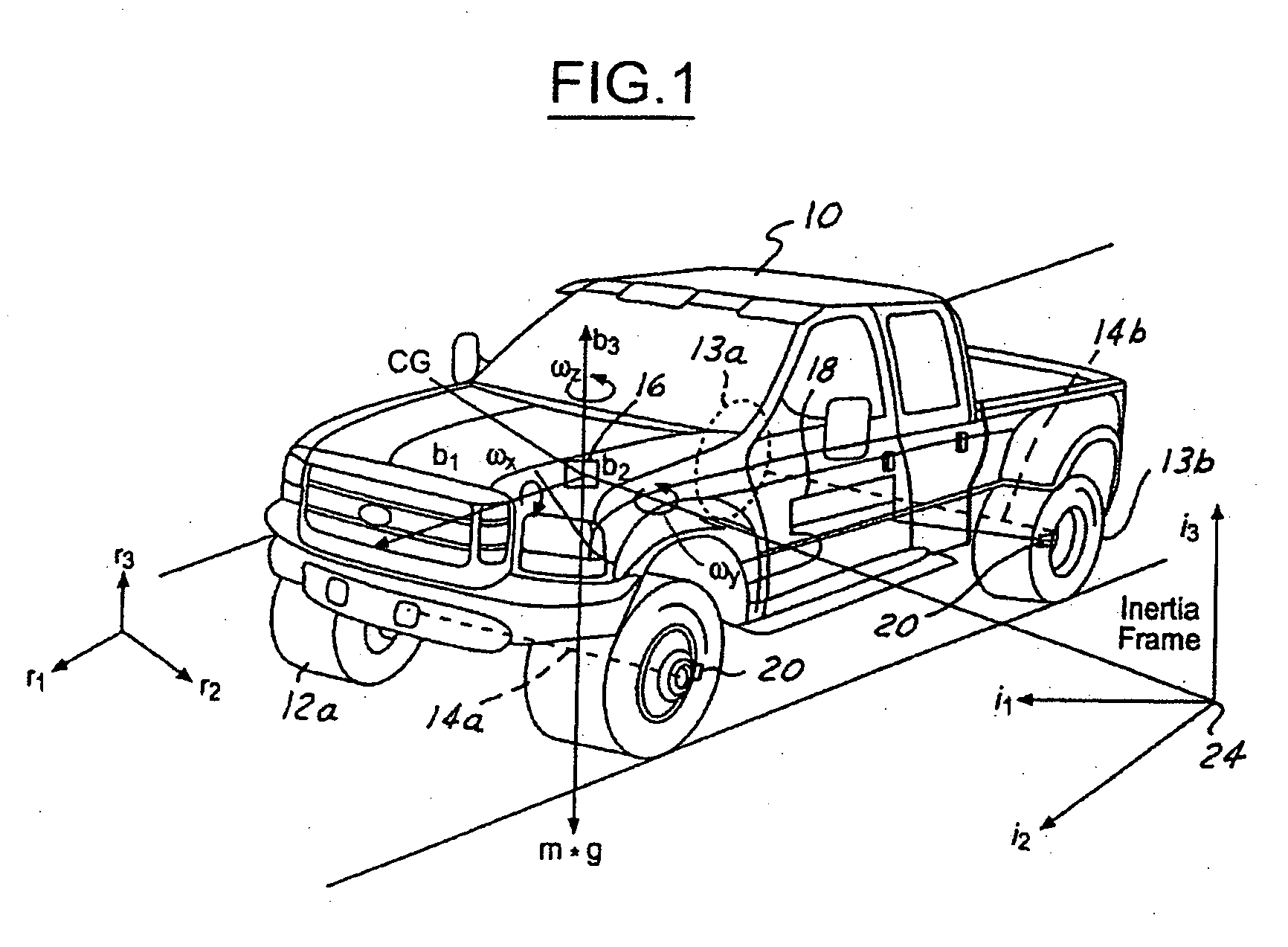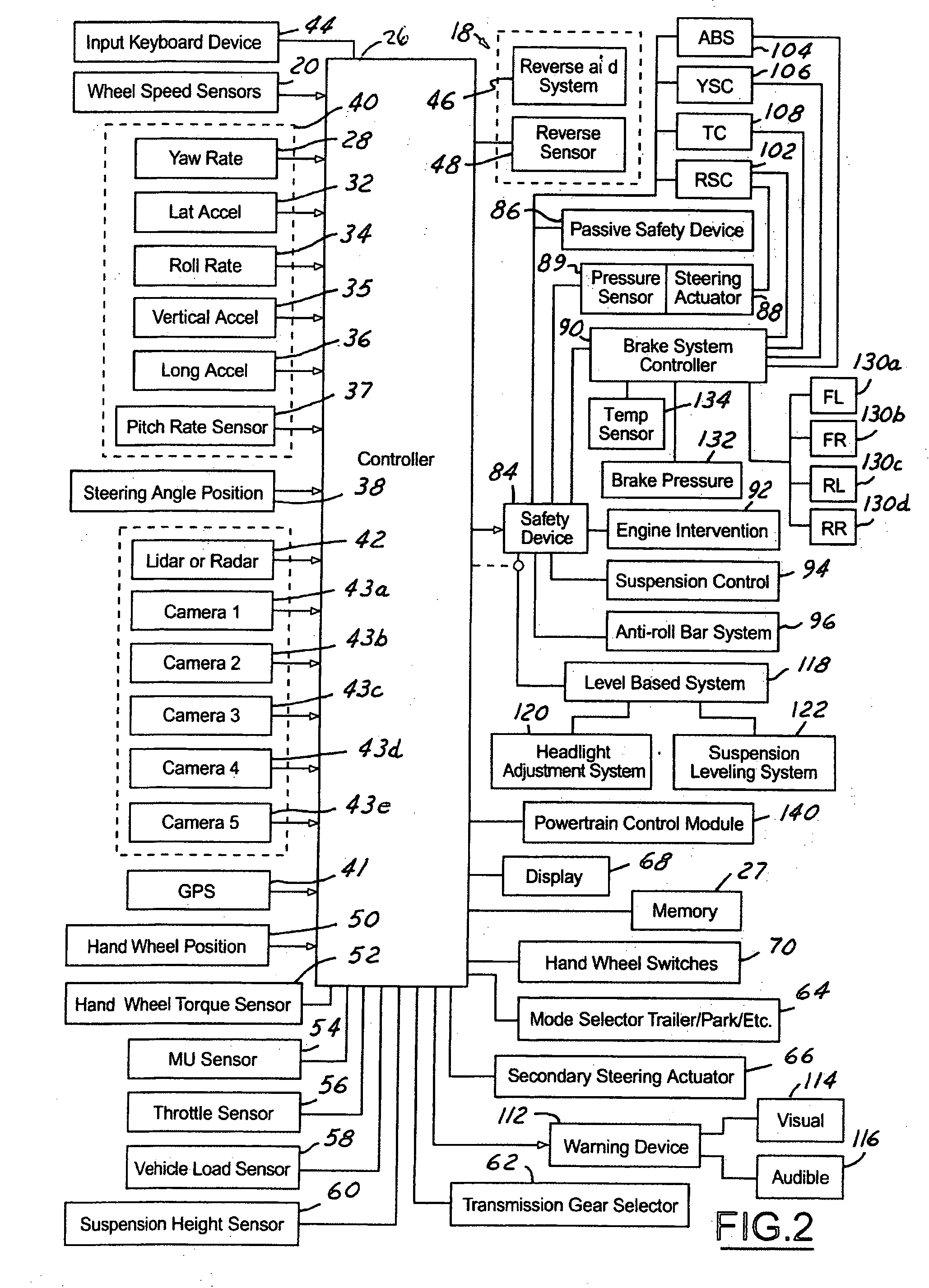Method and apparatus for determining adaptive brake gain parameters for use in a safety system of an automotive vehicle
a technology for automotive vehicles and gain parameters, applied in braking systems, vehicle position/course/altitude control, instruments, etc., can solve the problems of high variability and change in the gain coefficient of brake torque, and achieve the effect of more accurate determination of brake gain coefficients
- Summary
- Abstract
- Description
- Claims
- Application Information
AI Technical Summary
Benefits of technology
Problems solved by technology
Method used
Image
Examples
Embodiment Construction
[0015] Referring to FIG. 1, an automotive vehicle 10 with a control system of the present invention is illustrated. Vehicle 10 has front right and front left tires 12a and 12b and rear right tires 13a and rear left tires 13a and 13b, respectively. The vehicle 10 may also have a number of different types of front steering systems 14a including having each of the front wheels configured with a respective controllable actuators and the front wheels having a conventional type system in which both of the front wheels are controlled together. The vehicle 10 has a rear axle system 14b. Generally, the vehicle has a weight represented as Mg at the center of gravity of the vehicle, where g 9.8 m / s2 and M is the total mass of the vehicle.
[0016] The sensing system 16 may share sensors with other vehicle dynamic control systems such as a yaw stability control system sensor set or a roll stability control system sensor set. Of course, the actual sensors used will vary depending on the type of co...
PUM
 Login to View More
Login to View More Abstract
Description
Claims
Application Information
 Login to View More
Login to View More - R&D
- Intellectual Property
- Life Sciences
- Materials
- Tech Scout
- Unparalleled Data Quality
- Higher Quality Content
- 60% Fewer Hallucinations
Browse by: Latest US Patents, China's latest patents, Technical Efficacy Thesaurus, Application Domain, Technology Topic, Popular Technical Reports.
© 2025 PatSnap. All rights reserved.Legal|Privacy policy|Modern Slavery Act Transparency Statement|Sitemap|About US| Contact US: help@patsnap.com



